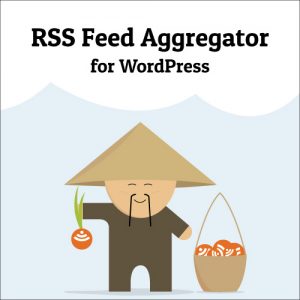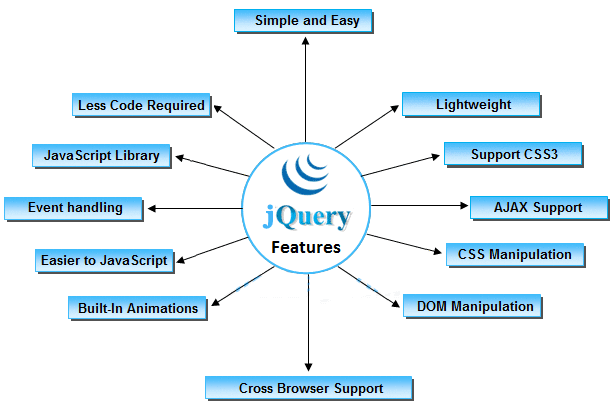Table of Contents

Introduction
WP RSS Aggregator, As the internet has evolved so has the need for content management and curation. In the early days, websites were mostly static and provided limited information. Today, websites are dynamic, with new content being added on a regular basis. In order to keep up with the constant demand for fresh content, many website owners turn to content syndication and aggregation tools like WP RSS Aggregator.
WP RSS Aggregator history
WP RSS Aggregator is a WordPress plugin that enables website owners to easily aggregate, import, and display content from RSS feeds on their websites. With WP RSS Aggregator, you can choose which RSS feeds to use, filter content by keywords, customize the display options for the content, and even set up automated content publishing from RSS feeds.
The plugin was developed by Jean Galea, a web developer and entrepreneur from Malta, who saw a need for a simple and efficient tool for content aggregation and syndication. In 2012, he released the first version of WP RSS Aggregator, which quickly gained popularity among website owners looking for an easy way to add fresh content to their websites.
Since then, WP RSS Aggregator has gone through several major updates and improvements, with the latest version being WP RSS Aggregator 4.18.2 as of the time of this writing. The plugin has become one of the most popular and widely used tools for content syndication and aggregation in the WordPress community.
The Development of WP RSS Aggregator
The development of WP RSS Aggregator began in 2012, when Jean Galea was working on a personal project that involved aggregating content from various RSS feeds. He found that the available tools for content aggregation were either too complex or too limited, and he wanted to create a solution that was both powerful and user-friendly.
Galea began working on the plugin, which he initially called “WP RSS Multi Importer.” He released the first version of the plugin to the WordPress plugin repository in March 2012, and it quickly gained popularity among website owners and developers.
Over the next few years, Galea continued to develop and improve the plugin, adding new features and improving the user interface. In 2014, he changed the name of the plugin to WP RSS Aggregator to better reflect its functionality and purpose.
In 2015, Galea founded WP Mayor, a website that provides tutorials, reviews, and resources for WordPress users. WP RSS Aggregator became one of the most popular plugins featured on the site, and Galea continued to develop and improve the plugin based on user feedback and suggestions.
In 2017, WP RSS Aggregator was acquired by RebelCode, a WordPress product development company founded by Mark Zahra and Ashley Rich. Under RebelCode’s ownership, the plugin has continued to receive updates and improvements, with a focus on making it more user-friendly and accessible to website owners and developers of all skill levels.
The Role of WP RSS Aggregator in Content Curation and Management
WP RSS Aggregator has become an essential tool for website owners and developers who are looking to streamline their content curation and management processes. With its powerful features and user-friendly interface, WP RSS Aggregator allows website owners to easily add fresh, relevant content to their websites, without the need for manual content creation.
The plugin can be used to aggregate content from a variety of sources, including news websites, blogs, social media feeds, and more. It also provides a variety of customization options, allowing users to filter content by keywords, customize the display options for the content, and even set up automated content publishing from RSS feeds.
What is WP RSS Aggregator?
WP RSS Aggregator is a WordPress plugin that allows website owners to syndicate and aggregate content from various RSS feeds. With WP RSS Aggregator, website owners can easily add and display content from multiple sources on their website, including news feeds, blog feeds, social media feeds, and more.
WP RSS Aggregator offers a variety of features and options for content syndication and aggregation. One of the key features is the “feed to post” option, which allows website owners to automatically publish new content from RSS feeds as posts on their website. This feature can be set up to run on a regular basis, ensuring that the website always has fresh content.
In addition to the “feed to post” feature, WP RSS Aggregator offers other options for content management and curation. Website owners can filter content based on keywords or phrases, and can also choose which sources to display on their website. This level of customization allows website owners to tailor the content displayed on their website to their audience and their brand.
Why Use WP RSS Aggregator?
There are many benefits to using WP RSS Aggregator for content syndication and aggregation. Some of the key benefits include:
- Easy to use: WP RSS Aggregator is a user-friendly plugin that can be installed and set up quickly and easily. The plugin includes a variety of customization options, allowing website owners to tailor the content displayed on their website to their specific needs.
- Cost-effective: WP RSS Aggregator is a cost-effective solution for content syndication and aggregation. Unlike other content management tools, WP RSS Aggregator is a one-time purchase with no ongoing fees or subscriptions.
- Time-saving: WP RSS Aggregator allows website owners to automate the process of content curation, saving time and resources. The “feed to post” feature ensures that new content is automatically published on the website, without the need for manual updates.
- Improved SEO: By adding fresh, relevant content to their website on a regular basis, website owners can improve their search engine rankings and attract more visitors to their website.
- Increased engagement: By displaying content from a variety of sources, website owners can provide a more engaging and diverse user experience for their visitors. This can help to increase visitor engagement and retention.
How to Use WP RSS Aggregator
Using WP RSS Aggregator is easy and straightforward. Here are the steps you need to follow:
- Install WP RSS Aggregator: WP RSS Aggregator can be installed like any other WordPress plugin. Simply search for “WP RSS Aggregator” in the WordPress plugin repository, and click “Install Now.”
- Configure WP RSS Aggregator settings: Once the plugin is installed, navigate to the plugin settings page and configure the options to suit your needs. You can choose which RSS feeds to use, set up keyword filters, and customize the display options for the content on your website.
- Add RSS feeds to your website: Once you have configured the settings, you can add RSS feeds to your website by using the shortcode provided by WP RSS Aggregator. You can add the shortcode to any page or post on your website, and the content from the RSS feed will be displayed in the format you have selected.
- Use the “feed to post” feature (optional): If you want to automatically publish content from RSS feeds as posts on your website, you can use the “feed to post” feature. This feature can be set up to run on a regular basis, ensuring that your website always has fresh content.
- Manage your content: WP RSS Aggregator also provides a variety of options for managing your content. You can set up automatic content deletion after a certain period of time, and you can also choose to manually delete content as needed.
WP RSS Aggregator Versions

WP RSS Aggregator is a popular WordPress plugin that has been helping website owners curate and display RSS feeds on their sites for many years. Over the years, the plugin has gone through several versions, with each new release bringing new features and improvements.
In this blog post, we will take a closer look at the different versions of WP RSS Aggregator and the key features and improvements that each one has introduced.
Version 1.0 – The Early Days
WP RSS Aggregator was first released in 2012, and version 1.0 was the very first iteration of the plugin. It was a simple plugin that allowed users to aggregate RSS feeds and display them on their WordPress site using shortcodes. This initial version included the ability to customize feed titles, descriptions, and source attribution.
Version 2.0 – The Big Update
Version 2.0 of WP RSS Aggregator was released in 2014 and brought many significant improvements to the plugin. It included the ability to import and aggregate feeds from other sites, not just from one’s own site. It also introduced a new shortcode that allowed users to display feed items in a grid layout, and a new widget that could be used to display feeds in the sidebar.
The biggest change in version 2.0 was the introduction of a premium add-on, which allowed users to import and display images from feeds, set up keyword filtering, and more.
Version 3.0 – The Major Upgrade
Version 3.0 of WP RSS Aggregator was released in 2015 and was a significant upgrade to the plugin. It introduced a completely new interface, making it easier for users to create and manage feed sources. It also included the ability to create templates for feed items, which allowed users to customize the look and feel of their feed items.
One of the most significant improvements in version 3.0 was the introduction of the Excerpts & Thumbnails add-on, which allowed users to display excerpts and thumbnails for their feed items. This add-on also introduced the ability to filter feed items by keyword and to limit the number of items displayed.
Version 4.0 – The Feed to Post Add-On
Version 4.0 of WP RSS Aggregator was released in 2016 and brought a significant new feature to the plugin – the Feed to Post add-on. This add-on allowed users to automatically import feed items as WordPress posts, which could be customized using templates and displayed like any other post on their site.
This version also introduced the ability to set up cron jobs, which allowed users to automatically import and update feeds on a regular basis.
Version 5.0 – The Complete Overhaul
Version 5.0 of WP RSS Aggregator was released in 2018 and was a complete overhaul of the plugin. It introduced a new modular architecture that allowed for more flexibility and extensibility. It also included a new user interface that made it easier to create and manage feed sources.
This version also introduced the ability to use shortcodes and widgets to display feed items anywhere on a WordPress site, not just in the sidebar. It also included the ability to import and display videos from YouTube, Vimeo, and other sources.
Version 6.0 – The Performance Upgrade
Version 6.0 of WP RSS Aggregator was released in 2019 and focused on improving the performance and speed of the plugin. It introduced a new caching system that significantly reduced the time it took to import and display feed items.
This version also included a new keyword filtering system that allowed users to filter feed items based on multiple keywords, and a new translation system that made it easier to translate the plugin into different languages.
Version 7.0 – The Gutenberg Integration
Version 7.0 of WP RSS Aggregator was released in 2020 and focused on integrating with the new WordPress block editor, Gutenberg. This version included several new blocks that allowed users to display RSS feeds in a more flexible and customizable way. These blocks included a feed block, which could be used to display a single feed, and an aggregation block, which could be used to display multiple feeds at once. The new blocks allowed users to customize the look and feel of the feed by changing the font, color, and layout.
Another new feature in version 7.0 was the ability to use shortcodes to display feeds. Shortcodes are a simple way to add functionality to a WordPress site by inserting a small piece of code into a page or post. With the new shortcodes, users could easily add feeds to their site without having to use the new Gutenberg blocks.
Version 8.0 – New Templates and More Customization Options
In 2021, WP RSS Aggregator released version 8.0, which introduced several new features that made it even easier for users to customize the look and feel of their feeds. One of the biggest changes in version 8.0 was the introduction of new templates that could be used to display feeds. These templates included several pre-built designs that could be easily customized to match the style of a user’s site.
In addition to the new templates, version 8.0 also included several new customization options, such as the ability to set custom background colors and add custom CSS. These new options allowed users to create feeds that were truly unique and customized to their specific needs.
Version 9.0 – Advanced Filtering and Improved Performance
In 2022, WP RSS Aggregator released version 9.0, which included several new features that improved the performance and functionality of the plugin. One of the most significant new features in version 9.0 was the advanced filtering system. This new system allowed users to filter feeds based on complex criteria, such as keyword frequency and author name.
Conclusion

WP RSS Aggregator is a powerful and flexible tool for content syndication and aggregation. Whether you are looking to add fresh content to your website, automate the content curation process, or provide a more engaging user experience for your visitors, WP RSS Aggregator has the features and options you need.
By using WP RSS Aggregator, you can save time and resources, improve your search engine rankings, and increase visitor engagement and retention. With its user-friendly interface and wide range of customization options, WP RSS Aggregator is a must-have tool for any website owner looking to streamline their content management and curation processes.


